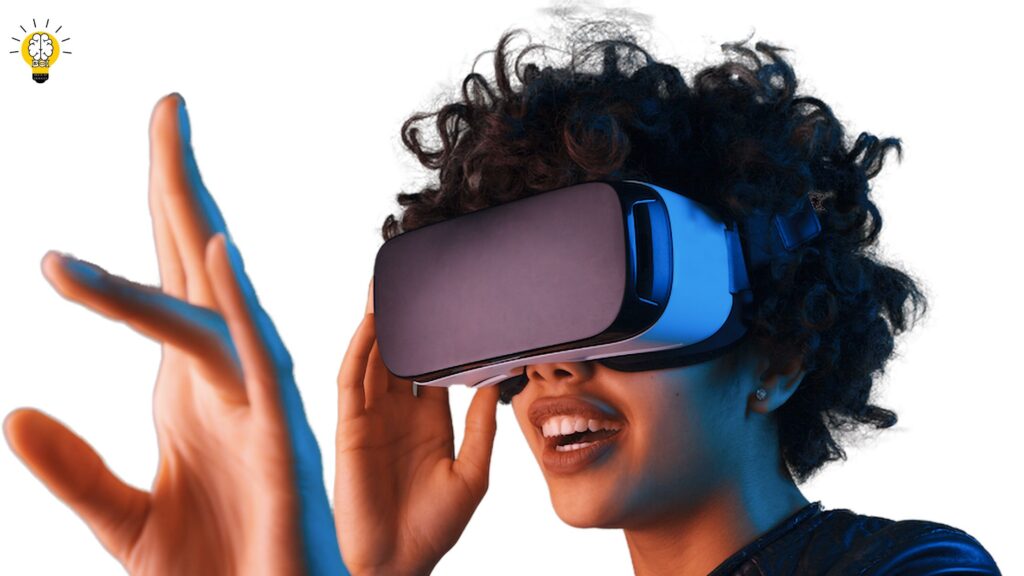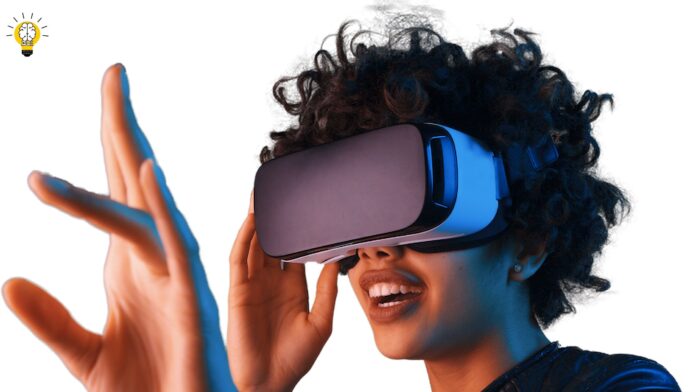Since the beginning, virtual reality (VR) has advanced significantly. What was once thought to be science fiction is becoming a reality, changing industries and capturing our interest. However, what does the future of immersive VR hold? We could be expecting incredible advances that will completely change how we interact with virtual worlds during the next five years. Let’s explore what could be approaching.
Table of Contents
The Evolution of Virtual Reality
Virtual reality systems have developed from basic setups to more complex ones. While early virtual reality experiences were unwieldy and unreal, current hardware provides immersive soundscapes and high-resolution graphics. VR experiences can now be more interactive and captivating thanks to this evolution.
Advancements in VR Technology
Virtual reality technology is going to advance more in the upcoming years. Motion tracking, field of vision, and display resolutions should all see advancements. These improvements will reduce motion sickness and improve user comfort while making virtual the environment even more lifelike.
Enhanced User Experiences
The key to the VR of the future is creating experiences that are as real as possible. Users will be able to experience textures and feelings that closely resemble interactions in real life because of developments in haptic feedback and sensory technologies. Imagine being in a virtual environment and being able to experience the warmth of the sun or the sharp edges of a rock!
The Role of Artificial Intelligence in VR
The future of virtual reality (VR) will be greatly influenced by artificial intelligence (AI). The virtual environment will be more advanced and responsive thanks to AI algorithms. AI could, for instance, produce lifelike NPCs (non-player characters) that respond to player input, enhancing the dynamic and interactive nature of virtual environments.
Virtual Reality in Entertainment
One of the most interesting markets for VR development is entertainment. More interactive movies, virtual concerts, and immersive gaming experiences are to be expected. With the blending of reality and virtual experiences, new types of multisensory entertainment will become possible.
Impact on Education and Training
Virtual reality has the power to completely change training and education. In a secure and controlled setting, interactive learning will be facilitated via virtual classrooms and simulations. Before doing an operation on actual patients, for example, medical students could practice in a virtual environment.
VR in Healthcare and Therapy
Virtual reality is already being used in healthcare for the rehabilitation of the body, mental health treatments, and pain management. More advanced virtual reality treatments that address a range of medical issues and provide novel approaches to promote patient recovery and well-being should be available within the next five years.
The Future of Social Interactions in VR
People will be enabled to connect in virtual spaces as if they were physically together thanks to the growing popularity of social VR platforms. This could result in the development of new social networking and cooperation platforms that would link individuals worldwide and remove geographical limitations.
Challenges and Limitations
Virtual reality (VR) has its share of problems, including high costs, limitations on technology, and even health risks. For adoption to be accepted by many, these problems must be resolved. These challenges can be addressed, for instance, by reducing the cost of VR equipment and enhancing security measures.
Ethical Considerations and Privacy
As virtual reality technology grows, privacy and ethical issues will become more pressing. Concerns including consent, data security, and addiction risk will need to be addressed. VR’s continued growth will depend on how secure and considerate user privacy is made for these experiences.
The Role of 5G and Edge Computing
Virtual reality will be greatly impacted by the introduction of 5G and developments in edge computing. Virtual reality (VR) experiences will become more immersive and fluid with increased internet speeds and reduced delay. Real-time communication and high-quality virtual content streaming will be made possible by this.
The Integration of Augmented Reality
Virtual reality (VR) and augmented reality (AR) will increasingly combine to produce mixed reality experiences. Users can engage with virtual and real-world components at the same time through the use of AR and VR. This combination will create new opportunities in education, entertainment, and other areas.

Future Trends to Watch
The next steps in immersive VR will be shaped by several trends. These include the creation of fully immersive virtual worlds with limitless potential, more personalized virtual experiences, and improvements in brain-computer interfaces.
How VR Will Transform Everyday Life
VR will change the way we work, interact with others, and pass the time in our daily lives. VR will change our everyday routines and interactions, from virtual offices and social gatherings to realistic shopping experiences.
Conclusion
Immersive virtual reality has a bright and promising future. We may anticipate increasingly lifelike, changing, and captivating virtual experiences as technology develops. VR will be a big part of the future, whether it’s for social connections, education, or happiness.
FAQs
What are the main advancements expected in VR technology over the next five years?
In the next five years, we can expect improvements in display resolutions, field of view, motion tracking, and haptic feedback technologies.
How will AI impact the future of virtual reality?
AI will enhance VR by creating more responsive and intelligent virtual environments, including realistic NPCs and adaptive scenarios.
What are some potential applications of VR in education?
VR can be used for virtual classrooms, interactive simulations, and hands-on learning experiences, such as practicing surgeries or conducting science experiments.
What are the main challenges facing the widespread adoption of VR?
Challenges include high costs, technical limitations, and potential health risks. Addressing these issues will be crucial for broader adoption.
How will 5G technology influence VR experiences?
5G will enable faster internet speeds and reduced latency, resulting in smoother and more immersive VR experiences with real-time interactions and high-quality streaming.

